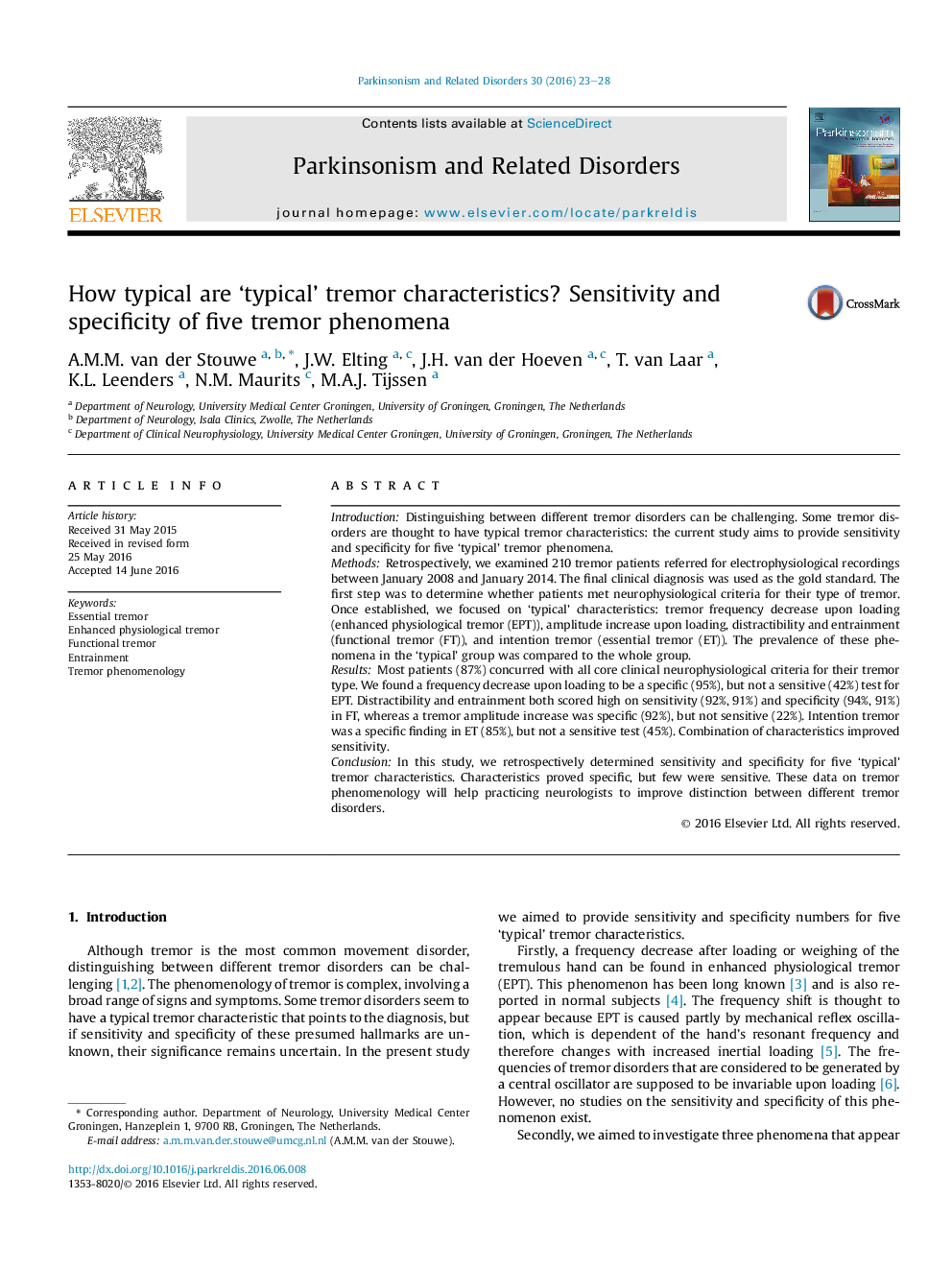| Article ID | Journal | Published Year | Pages | File Type |
|---|---|---|---|---|
| 1920218 | Parkinsonism & Related Disorders | 2016 | 6 Pages |
•Five tremor characteristics were assessed retrospectively in 210 tremor patients.•Included were: effect of loading, entrainment, distractibility and intention tremor.•Tremor characteristics proved specific; not all were sensitive.•Combining characteristics improved sensitivity.•This study reports on these phenomena in a large and diverse population to date.
IntroductionDistinguishing between different tremor disorders can be challenging. Some tremor disorders are thought to have typical tremor characteristics: the current study aims to provide sensitivity and specificity for five ‘typical’ tremor phenomena.MethodsRetrospectively, we examined 210 tremor patients referred for electrophysiological recordings between January 2008 and January 2014. The final clinical diagnosis was used as the gold standard. The first step was to determine whether patients met neurophysiological criteria for their type of tremor. Once established, we focused on ‘typical’ characteristics: tremor frequency decrease upon loading (enhanced physiological tremor (EPT)), amplitude increase upon loading, distractibility and entrainment (functional tremor (FT)), and intention tremor (essential tremor (ET)). The prevalence of these phenomena in the ‘typical’ group was compared to the whole group.ResultsMost patients (87%) concurred with all core clinical neurophysiological criteria for their tremor type. We found a frequency decrease upon loading to be a specific (95%), but not a sensitive (42%) test for EPT. Distractibility and entrainment both scored high on sensitivity (92%, 91%) and specificity (94%, 91%) in FT, whereas a tremor amplitude increase was specific (92%), but not sensitive (22%). Intention tremor was a specific finding in ET (85%), but not a sensitive test (45%). Combination of characteristics improved sensitivity.ConclusionIn this study, we retrospectively determined sensitivity and specificity for five ‘typical’ tremor characteristics. Characteristics proved specific, but few were sensitive. These data on tremor phenomenology will help practicing neurologists to improve distinction between different tremor disorders.
